Lourdes: Pilgrims flock to French sanctuary online in their millions
- Published
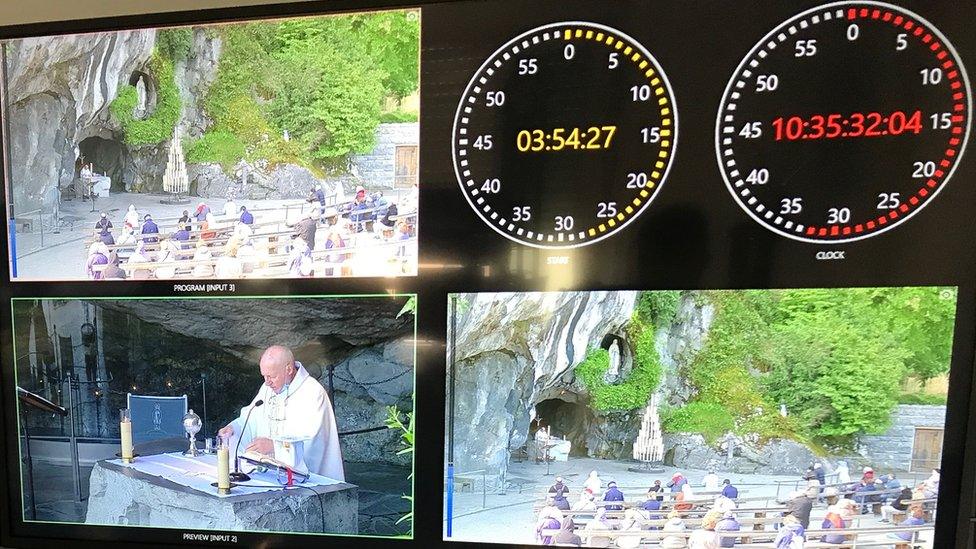
Twenty cameras follow the services at the sanctuary
In normal times around 15,000 Christian pilgrims a day would be visiting the Sanctuary of Lourdes at this time of year. But Lourdes, as everywhere, has had to change with the times.
The most visited site is the grotte, or cave, where the Virgin Mary is said to have appeared in front of a young girl collecting firewood in 1858. Many are attracted by that story - and very ill pilgrims are drawn by the miraculous healings that are said to have occurred there.
Nowadays as few as 30 people kneel for afternoon prayers in front of a statue of a Virgin Mary at the cave entrance. This would once have been unthinkable, but the pandemic and restrictions imposed last year have brought pilgrimages to a dramatic halt.
Jump in audiences
Lourdes has a population of just 14,000, but before Covid the sanctuary attracted around 3.5 million, mainly Catholic, visitors a year. So Church authorities decided to reach out to the faithful with what are being called e-pilgrimages.
All day long, radio and TV broadcasts of services and prayers at the grotte are shown on Lourdes TV, external and rebroadcast by France's national Catholic Church TV channel KTO, which also broadcasts worldwide to francophone countries.
The services are also re-broadcast live on both radio and television outlets on five continents, according to the sanctuary.
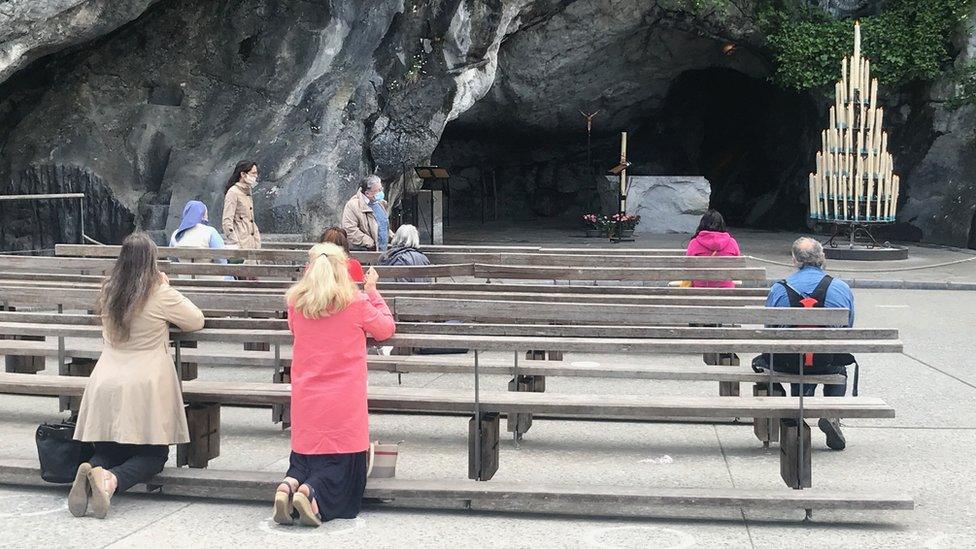
Audiences travelling to the grotte these days are sparse in number
Mathias Terrier, who is head of the Lourdes Sanctuary studio facilities, said they had always broadcast certain prayer services but viewer numbers have jumped from one million to five million a day. Followers on social media have soared by 40%.
"Every day services are held in four languages - French, Italian, English and Spanish; on some days we even have priests who can give masses in Korean or Chinese," he told the BBC. "We hold Facebook Live events at the sanctuary and our social media accounts memberships have risen by more than 40% in the past year."
The sanctuary has 20 outside broadcast television cameras to record the services across the sanctuary, and in the studio an engineer switches between the various cameras during the live events.
Temporary fix for pilgrims
The priests start their services in front of the grotte, saying: "Even though there are few of us here physically, welcome to all those following us globally from their homes via internet, radio or TV."
The sanctuary even has its own radio station, Radio Présence, which broadcasts across France, and senior clergy come in to speak to directly to diocese community leaders who would normally come to Lourdes each year.
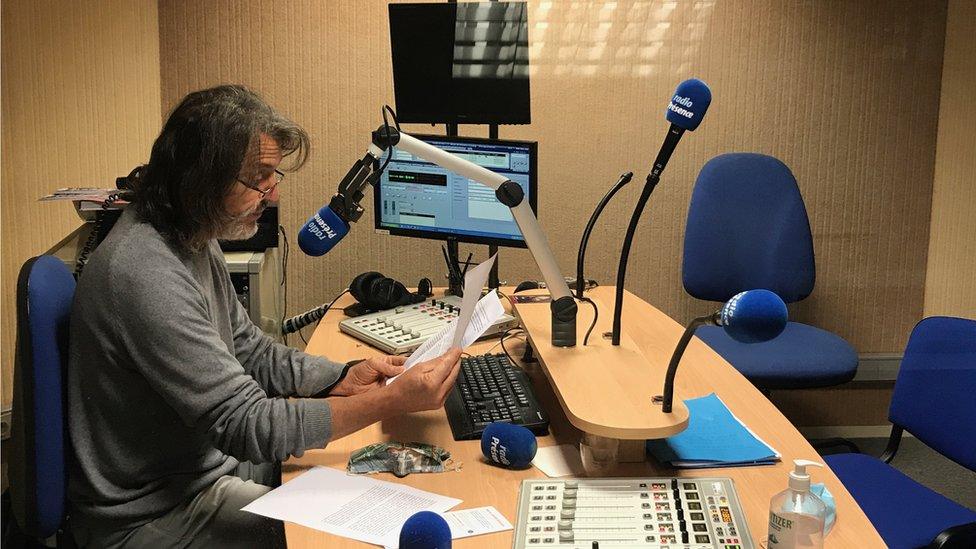
Underlining the success of this outreach programme, the sanctuary organised an all-day worldwide remote e-pilgrimage event last July called Lourdes United, which pulled in more than 80 million viewers.
Mathias Terrier said that when Indian broadcasters and social media outlets dialled in to take the broadcasts live, their software system crashed temporarily because there were so many viewers in the sub-continent which they hadn't expected at all.
They intend to repeat the same event this July, but the Church authorities say the broadcasts are a temporary fix: they want the pilgrims back.
"The goal of all these broadcasts is not to find a way of keeping pilgrims at a distance but to create a desire for them to return to Lourdes," insists Olivier Ribadeau Dumas, rector of the Sanctuary. "A pilgrimage sitting on your couch doesn't make sense."
Our objective is to support the faithful in their prayers and strengthen their bond with the Virgin Mary and encourage them to return as soon as they can


Facts about Lourdes
The Catholic Church says 70 miraculous healings have occurred at Lourdes - the most recent in 2018
The Sanctuary has examined more than 7,000 cases of unexplained cures
The Office of Medical Observations at the Sanctuary carries out investigations into unexplained healings

Lourdes has the largest number of hotels in France outside Paris. There are 143 in all, with more than 9,800 rooms, and it's been a wretched 15 months for the industry.
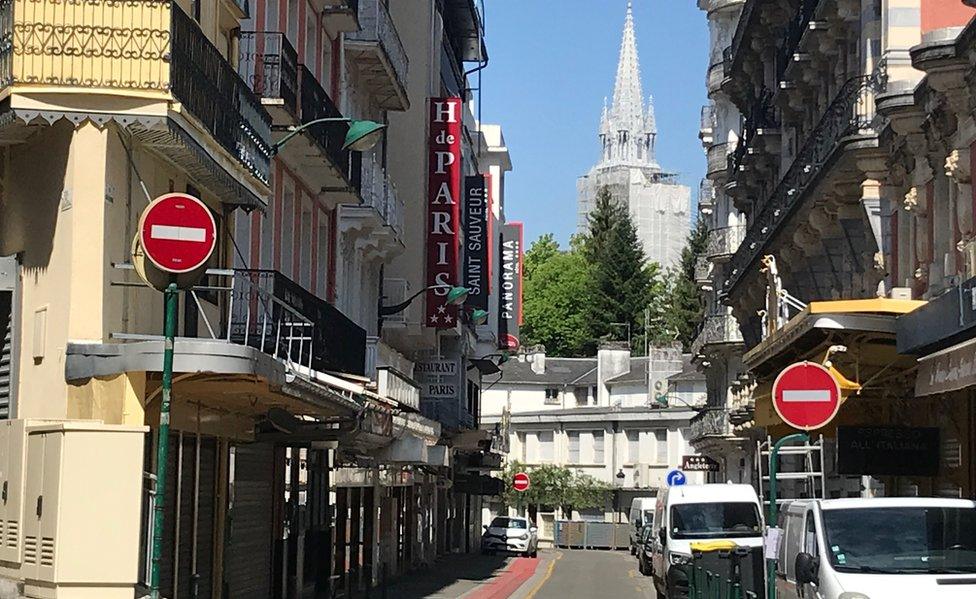
Lourdes would normally be bustling with visitors at this time of year
Christian Giles, who runs the local hotel trade body, says some are preparing to reopen again in July as government Covid restrictions are loosened, but it will be slow.
He expects some pilgrims to return individually but most come in tour groups that require a lot of organising ahead of time.

"Many of our guests are elderly or sick and frail. Often they arrive on planes or buses equipped to handle pilgrim groups and it will take time before they are up and running again," Mr Giles told the BBC. "This year we do not expect many people to come back for pilgrimages. It will be another two or three years before we return to normal here."
On top of that, many pilgrims come from South America, and it's unclear when they will be able to come to Europe without having to go into quarantine first.
'Missing pilgrimage is a big deal'
Every year, Tangney Tours organises pilgrimages for 10,000 UK-based visitors. Many return each year and, borrowing from the sanctuary's approach, they are keeping in touch with pilgrims by making videos for absent clients.
"Sometimes the groups will contact us and ask us to light a candle dedicated to their particular group or diocese, so we buy the candle and have it decorated in the appropriate colours or coat of arms," says local representative Lisa Dodd.
We know they are missing Lourdes because we get a lot of repeat business and they come back year after year, so missing one year of their annual pilgrimage is a big deal to them.

They also video themselves lighting candles so regulars know they are being remembered in their prayers.
Around 450,000 pilgrims arrive on charter flights from across the globe at Lourdes airport but none are scheduled. For the time being, live-streamed pilgrimages are here to stay.
Chris Bockman is author of "Are you the foie gras correspondent? Another slow news day in South West France"

You may also be interested in:
Churches connect with congregations online (April 2020)
Related topics
- Published20 February 2021
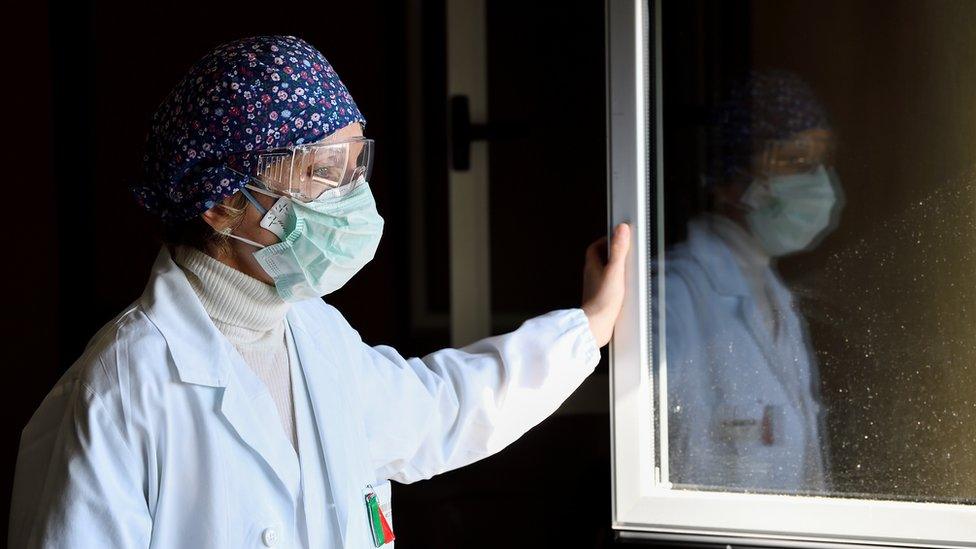
- Published3 January 2021
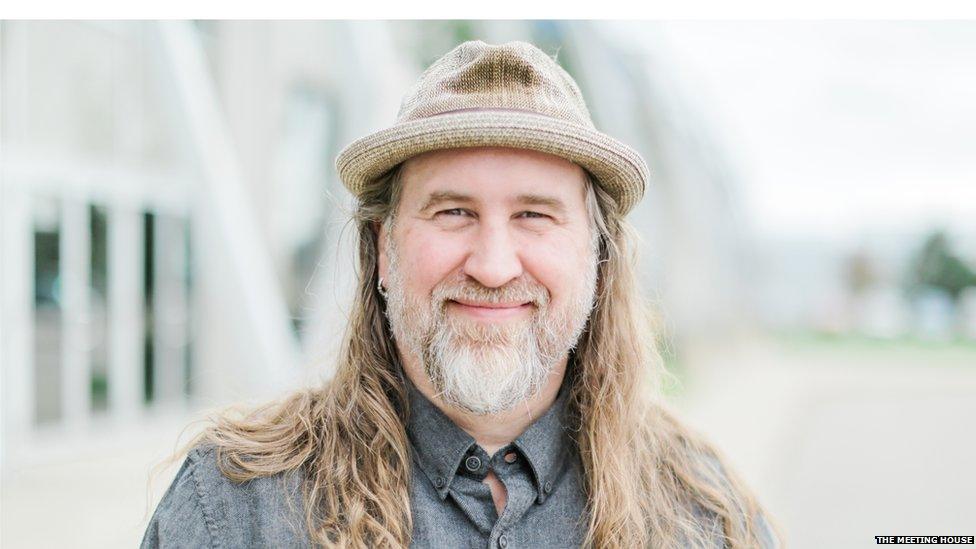
- Published24 June 2020
